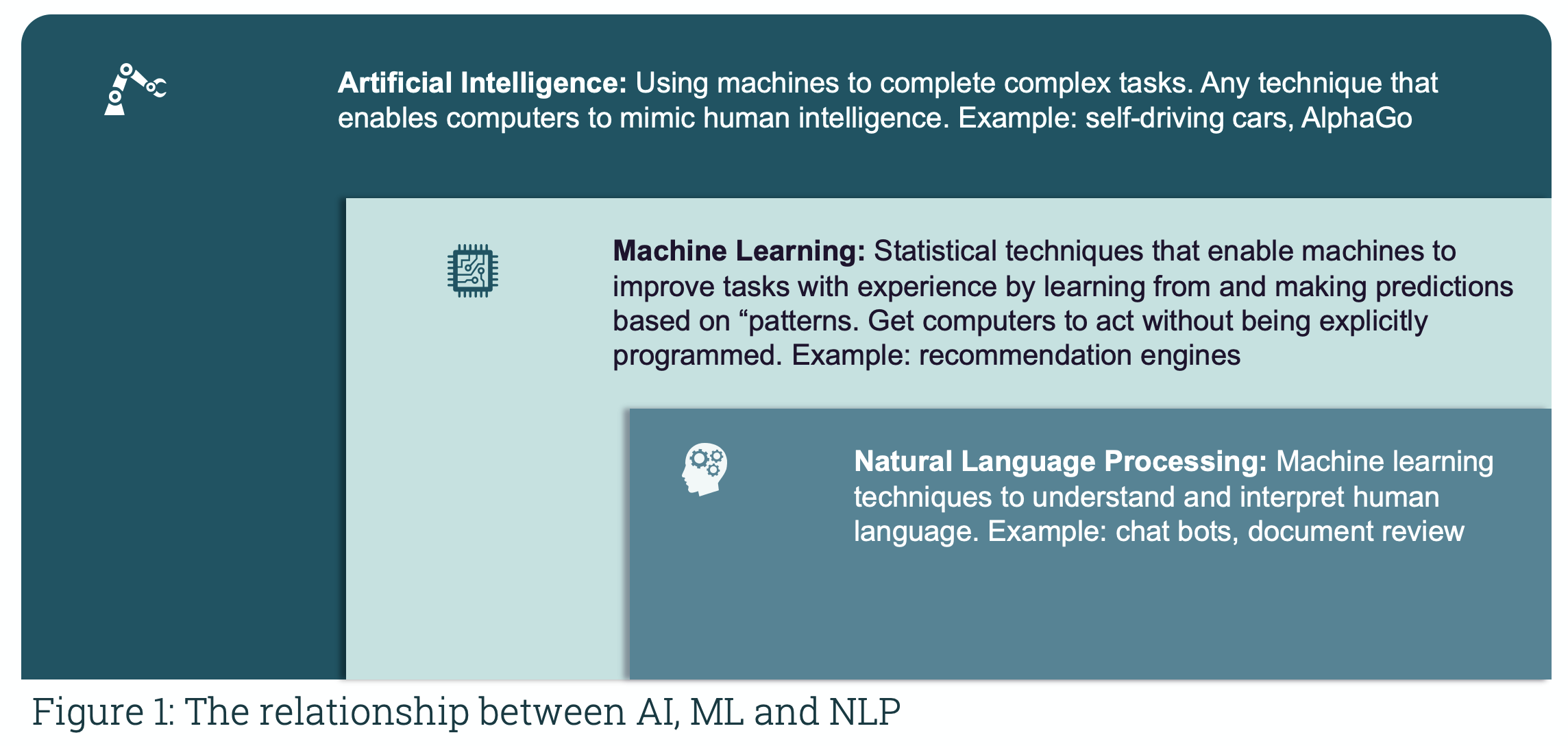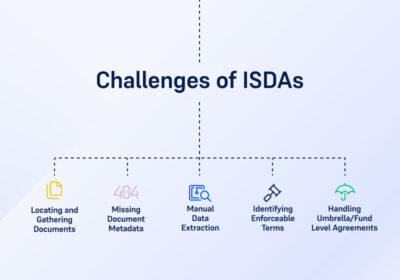What is Document AI, and how can it help your business?
In every legal TV drama, there’s a scene where a crack team of lawyers arm themselves with yellow highlighters and scour boxes of documents around the clock in search of a specific piece of information. After spending several sleepless nights at this task, someone finds the proverbial needle in the document haystack that eventually wins the day. While this tension might be entertaining to watch, the reality for those that have experienced it is much less fun. It’s also highly likely that the crack team of lawyers didn’t find all the salient information in just a few days/nights. Sorry if we just ruined the illusion, but the process of manually reviewing reams of documents is incredibly slow and inefficient. It’s also expensive and prone to error.
In the real world, most documents now exist electronically and, more importantly, technology has evolved to eliminate the need for manually reviewing documents altogether. This technology is called Document AI, and it can be used in any industry that needs to transform data that is siloed and unstandardized into a structured, usable format at scale. Document AI enables organizations to quickly and precisely extract and classify data whether its legal paperwork or financial reports as well as a myriad of different document types so they can make better, faster decisions.
But what exactly is Document AI technology?
Let’s start with the AI component of Document AI. Artificial intelligence (AI) is the use of any computer method to ‘train’ machines to mimic human intelligence so they can complete repetitive or complex tasks for us or predict outcomes. AI is already present in our day-to-day lives powering things like auto-correct on our phones, ride-hailing apps like Uber and Lyft, online purchase recommendations and facial recognition on Facebook.
Machine learning (ML) is the process of using patterns in data to ‘teach’ the machine, so its performance and predictions become more effective and accurate over time. Natural language processing (NLP) is the branch of AI focused on leveraging ML techniques so the machine can understand and interpret human language. The diagram below shows the relationship between AI, machine learning and NLP.

In the case of Document AI, ML and NLP are used to train a computer to simulate a human subject matter expert’s review of a set of documents. The result is a computer capable of ‘understanding’ the contents of documents, including the contextual nuances of the language within them. The technology can then accurately extract information and insights contained in the documents as well as categorize and organize the documents themselves. A Document AI platform sits on top of the technology enabling users with no previous AI, ML or NLP experience to quickly train the computer to extract the specific data they need from different document types. The platform puts the power of machine learning in the hands of non-technical teams like lawyers, analysts and accountants.
Why might your business need Document AI?
We are six decades into the information age and, by any measure, data has become a competitive currency in business. Yet, experts estimate that more than 80% of a company’s data is unstructured. This data typically takes the form of written text containing dates and numbers located in reports, contracts, memorandums, emails etc. Manually collating this information requires people who are familiar with the data to spend their time searching for it and preparing it to be analyzed before the actual analysis can be performed. Companies operating this way are underutilizing their most important and expensive resource – their human talent.
Document AI provides organizations with a better way to extract value from their unstructured data. Repetitive, manual document processing is expensive and inefficient. Many businesses have reached a tipping point, where the scale, complexity and speed of incoming data exceed the capacity and cost of manual processing.
At Eigen, we help organizations primarily within financial services with many different document-related challenges. For some clients, it’s the capability to analyze previously inaccessible data in-house across an entire portfolio so they can optimize their capital or prevent losses. For others, it’s the ability to automate existing manual document processes relating to deal execution and loan operations so they can do more business. Or for some, it’s being able to handle one-off regulatory exercises or ongoing record-keeping and reporting requirements without having to hire in lawyers or consultants to review the relevant paperwork.
How does Document AI work?
Most businesses are inundated with data on a daily basis, with it coming in from a variety of sources, but implementing another system may seem daunting. Eigen’s Document AI platform is easy to use and can be fully integrated with upstream document repositories and downstream databases to create seamless processes.
Clients can also choose how much support they want and can either have Eigen train their ML models or do it themselves. Non-technical users with no previous ML experience can easily handle this process; all they need is an understanding of the documents and data they need to extract. Here’s a step-by-step guide on how Document AI works:
- Scope and Agree Requirements – Eigen works closely with the client to understand their document challenges, their data needs, their internal capacity and overall goals. Based on this information, Eigen will recommend a service package with deployment and client support options to meet the client’s specific requirements.
- Upload and Label Documents – Documents are uploaded to the platform, and the relevant data for extraction is labeled by either Eigen (full-service) or the client (self-service) to train the machine learning model. Logic can also be applied to output answers based on the information located in the documents. However, if a client wants to get started immediately, they can choose to use Eigen’s existing warmed-up models and question templates.
- Machine Learning Model Created – Using the labels, the machine learning model is automatically built to meet the client’s specific requirements. The model is flexible and can be trained and re-trained to provide additional data points or answers at any time by repeating step 2 above.
- The Documents Are Analyzed – The model analyzes all new documents to retrieve the correct data points and provide answers to questions. The platform guides users to verify any low-confidence answers, which is used to further improve accuracy levels.
- Data Extracted and Exported – The extracted data is exported or sent directly to other systems via APIs. Legacy or new documents can be processed through the platform as often as required.
For those new to Document AI technology, it’s worth noting that it requires only a few documents to train the machine learning model. This enables clients to gain value from the platform and be able to answer questions about their specific data rapidly.
The Document AI future is now
Advancements in the areas of ML and NLP have made Document AI possible, and this is excellent news for any company that has large volumes of unstructured data they need to rapidly analyze. Document AI makes the task of scouring through boxes of documents with a highlighter in hand a thing of the past, best left to the imaginations of the TV drama writers.
In our next blog, we’ll look at how subject matter experts plus Document AI is a winning combination that delivers better accuracy than humans alone.
Want to understand how Document AI can help your business? Request a demo of our platform to find out how.
-
World Economic forum 2020
-
Gartner Cool Vendor 2020
-
AI 100 2021
-
Lazard T100
-
FT Intelligent Business 2019
-
FT Intelligent Business 2020
-
CogX Awards 2019
-
CogX Awards 2021
-
Ai BreakThrough Award 2022
-
CogX Awards Best AI Product in Insurance
-
FStech 2023 awards shortlisted
-
ISO27001
-
ISO22301
-
ISO27701
-
ISO27017
-
ISO27018


















